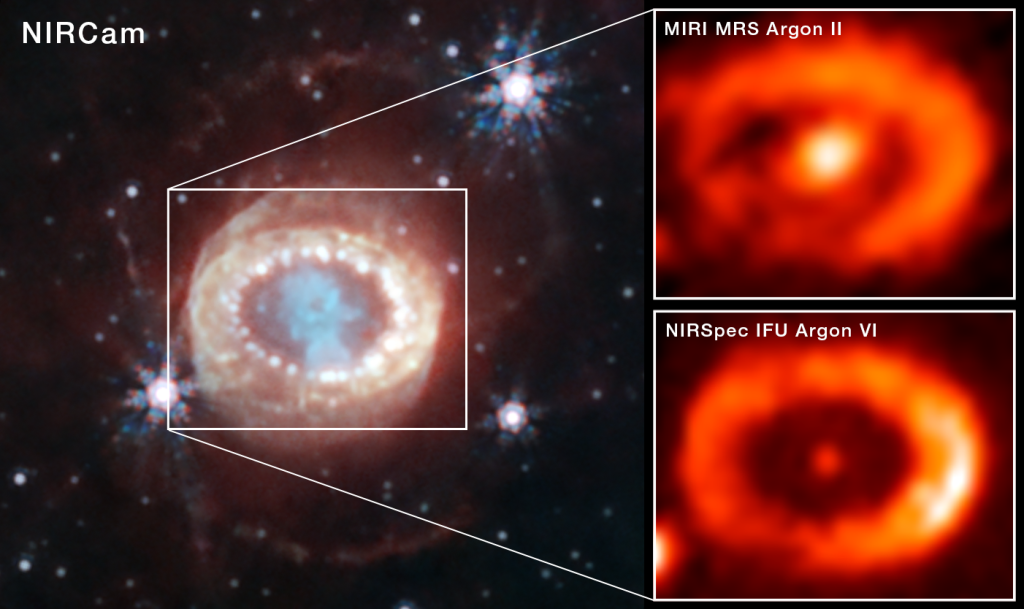James Webb Space Telescope Feed Post
Webb Finds Evidence for Neutron Star at Heart of Young Supernova Remnant
NASA’s James Webb Space Telescope has found the best evidence yet for emission from a neutron star at the site of a recently observed supernova. The supernova, known as SN 1987A, was a core-collapse supernova, meaning the compacted remains at its core formed either a neutron star or a black hole. Evidence for such a compact object has long been sought, and while indirect evidence for the presence of a neutron star has previously been found, this is the first time that the effects of high-energy emission from the probable young neutron star have been detected. The James Webb Space Telescope has observed the best evidence yet for emission from a neutron star at the site of a well-known and recently-observed supernova known as SN 1987A. At left is a NIRCam (Near-Infrared Camera) image released in 2023. The image at top right shows light from singly ionized argon (Argon II) captured by the Medium Resolution Spectrograph (MRS) mode of MIRI (Mid-Infrared Instrument). The image at bottom right shows light from multiply ionized argon captured by the NIRSpec (Near-Infrared Spectrograph). Both instruments show a strong signal from the center of the supernova remnant. This indicated to the science team that there is a source of high-energy radiation there, most likely a neutron star.NASA, ESA, CSA, STScI, C. Fransson (Stockholm University), M. Matsuura (Cardiff University), M. J. Barlow (University College London), P. J. Kavanagh (Maynooth University), J. Larsson (KTH Royal Institute of Technology)
